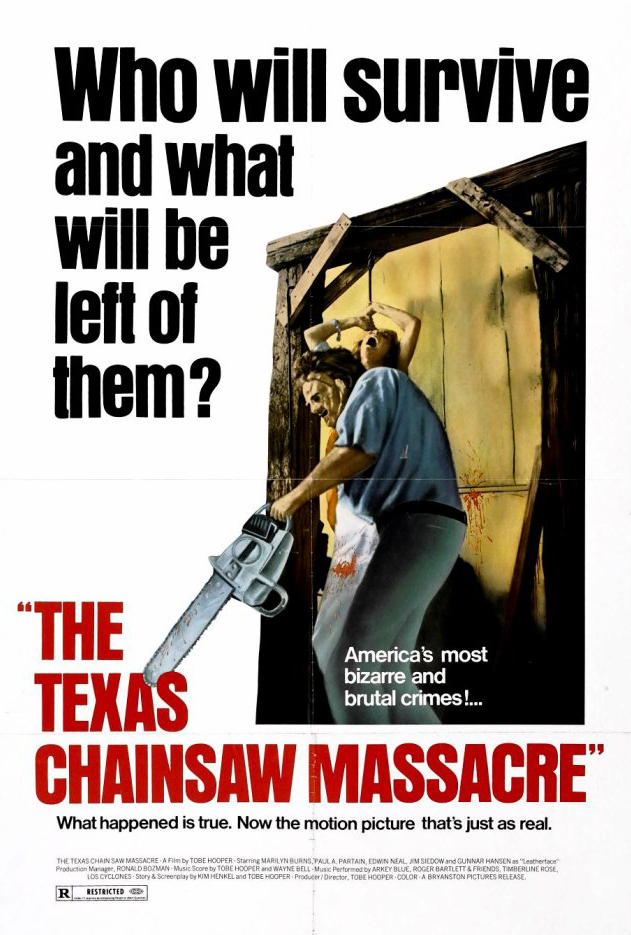Rating of
4/4
The Texas Chainsaw Massacre Turns 35
Mr. E Horror - wrote on 11/09/09
It has been thirty-five years since The Texas Chainsaw Massacre left its indelible mark on the horror oeuvre. Tobe Hooper’s only (arguably) great contribution to the genre hasn’t lost any of its potency. The overt sadism in The Texas Chainsaw Massacre is enough to make Eli Roth blush. Sequels have come and gone, and a remake was made, but no one has been able to match the formula of gore, thrill, and sheer terror of the original. A groundbreaking film in many aspects, the purity of its violence has paved the way for films like Hostel, Saw, and any of the recent films with overt or gratuitous violence and gore. The Mockumentary aspect of the film has laid the groundwork for The Blair Witch Project, Paranormal Activity, and innumerable lesser films. Keep in mind that some people actually believed that it was based on actual accounts of the events depicted in the film. Of course, the film has only a slight connection to real events. Just like The Silence of the Lambs and Psycho, Wisconsin’s Ed Gein was a small inspiration for The Texas Chainsaw Massacre.
Aside from its superior brutality, The Texas Chainsaw Massacre offers some social commentary. By depicting a family who turns to cannibalism to survive when they are put out of work by the mechanization of their jobs at the slaughterhouse is absolutely relevant for the era and for decades afterward. This fear helped define the rest of the seventies, eighties, and well into the nineties. It is still a fear today, though so much has already been mechanized that there isn’t much left to automate. Is the Sawyer family what we could become if we were forced to do whatever we needed to survive?
It is also, of course, a warning to young people not to step outside of familiar surroundings with the arrogance that they will be able to acclimate themselves to whatever may arise, especially if they are drug-using hippies. In this small area in rural Texas, even a physically challenged person isn’t spared a gruesome death. The rules of civilization are nonexistent. No one is off limits; no one is impervious to the horrors that lie within the unknown.
The Texas Chainsaw Massacre also helped pioneer the still very prevalent “final girl” archetype in horror films. Sally Hardesty, the only survivor, helped to lay the groundwork for Laurie Strode, Nancy Thompson, and Friday the 13th’s Alice, as well as many other female horror film survivors. She encapsulates many of the virtues that that make up the paradigm for survival in horror films.
Most of all, The Texas Chainsaw Massacre is simply a badass movie. It’s action-packed; it’s gory; it’s tension-filled. Every character is an individual, exhibiting his or her own personality in their brief time on the screen. The film is creepy as well as plain scary, and it even has a bit of humor. How many movies have you seen where you cannot wait for a wheelchair-bound character to die? Whether you’ve seen it a hundred times or not at all, do yourself a favor and pop it in your DVD or Blu-Ray player, sit back or sit forward on the edge of your seat and take in the film that is such an important part of horror. Not many things are still cool at thirty-five.




